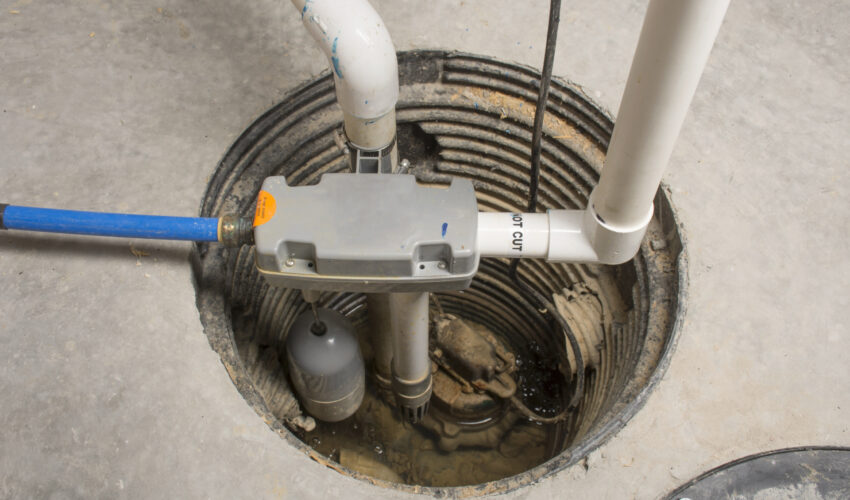Sump pumps are designed to move unwanted water from inside to outside the home and minimize water damage from flooding. But how do you know if your home really needs one? Is it worth the investment? Below, we explain how a sump pump works and some of the factors you’ll want to consider when deciding whether to install one.
How a Sump Pump Works
Water Collection: The system starts with a sump pit, a basin typically installed underground in the lowest part of your basement. When water enters your basement, whether groundwater or runoff from a hard rain, it should, if installed properly, drain into the pit.
Detection and Activation: The sump pump sits in the sump pit and uses a mechanism, usually either a pressure sensor or float switch, to detect water levels. When the water hits a certain preset threshold, the pump turns on.
Pumping Water Away: Once the pump is activated, it sucks up water and moves it through a discharge pipe. This pipe directs the water away from your home’s foundation to prevent further flooding and water damage. The pump will keep running until it stops detecting standing water in the sump pit. Once more water is detected, the cycle will begin again.
Types of Sump Pumps
There are a variety of sump pumps, all with slightly different triggers and setups. Submersible sump pumps, for example, consist of a single unit where the motor and pump sit together in the basin, a design that is both space-efficient and quieter. Pedestal sump pumps, on the other hand, have the motor positioned outside the basin, connected to the pump inside via a hose. This design offers easier accessibility and typically results in a longer lifespan.
While most sump pumps are electric, there are alternatives. Some models feature a backup battery-operated pump, ensuring continued operation during power outages. This is a good idea if you live in an area where storms often knock out your power, since these storms can also cause flooding. There are even water-powered options available, though they are not widely accepted.
What Homes Need a Sump Pump?
Homes with Basements
If your home has a basement, you need a sump pump. Since basements sit at or below ground level, they’re especially vulnerable to water intrusion. This can lead to major damage your homeowner’s insurance may not cover.
Having a sump pump can keep your basement dry and may even reduce your homeowner’s insurance premiums by reducing the risk of water damage.
Homes in Flood-Prone Areas
For homes built in areas that occasionally flood, having a sump pump is essential. Floodwaters can quickly invade your home and cause massive damage.
Floodwater is especially dangerous because it isn’t just rain—it can include raw sewage, agricultural runoff, and other contaminants that may make you sick. A sump pump helps manage this risk by removing water as soon as it detects it within the basin.
Additional Applications
Sump pumps aren’t just for residential use; they’re also used in other areas that are prone to accumulated water, like elevator shafts. In fact, you might be surprised to find out how many other places sump pumps are commonly used. From swimming pools to boats to construction sites, sump pumps play an important role in draining water from a wind range of locations.
In Closing
If you have a basement or live in a flood-prone area, a sump pump is a vital investment. If you’re not sure you need a sump pump or need help selecting the right one, contact us at North East Air Conditioning, Heating & Plumbing. Our experts are here to provide you with the best solutions for your home’s plumbing needs.


